16-18 April 2018
Crestet - top castle from A.D. 850 - the village founded at the end of the fall of Roman Empire, built high up for protection from marauding barbarians.
High vistas; we crawled up the rocky path, crudely carved into the slop, and these tourists followed our lead.
Traveling onward through the extensive vineyards, to our next stop...
Gigondas - Rick Steves' "This upscale village produces some of the region's best reds and is ideally situated for hiking, mountain biking, driving into the mountains." We like the little tandem trike.
Orange, France
Roman Orange was founded in 35 BC as Arausio (after the local Celtic water god). A previous Celtic settlement with that name existed in the same place, and a major battle, which is generally known as the Battle of Arausio, had been fought in 105 BC between two Roman armies and the Cimbri and Teutones tribes.
Arausio covered an area of some 170 acres and was well-endowed with civic monuments; in addition to the theatre and arch, it had a monumental temple complex and a forum.
The present town is renowned for its Roman architecture, and its Roman theatre, the Théâtre antique d'Orange, is described as the most impressive still existing in Europe. An arch, the theatre, and surroundings were listed in 1981 by UNESCO as a World Heritage Site.
Roman Orange was founded in 35 BC as Arausio (after the local Celtic water god). A previous Celtic settlement with that name existed in the same place, and a major battle, which is generally known as the Battle of Arausio, had been fought in 105 BC between two Roman armies and the Cimbri and Teutones tribes.
Arausio covered an area of some 170 acres and was well-endowed with civic monuments; in addition to the theatre and arch, it had a monumental temple complex and a forum.
The present town is renowned for its Roman architecture, and its Roman theatre, the Théâtre antique d'Orange, is described as the most impressive still existing in Europe. An arch, the theatre, and surroundings were listed in 1981 by UNESCO as a World Heritage Site.
Isle Sur La Sorgue - The small town is famous for its many antique shops and hosts antique markets most Sundays. It has many waterside cafés and restaurants, all within walking distance of each other. Its remaining many attractive water wheels, formerly for mill power, are situated throughout the town and still in working order.

Gordes - a town with impressive views, derelict up to the 1960s, now resurrected by big money.
Oppède-le-Vieux - Rick: " This off-the-beaten-path fixer-upper of a village was completely abandoned in 1910, and today has a ghost town-like feel." We climbed the 20-minute path to the small church and castle ruins, and found hard-workers rebuilding the castle.
Lacoste is a picturesque old mountain village overlooking the village of Bonnieux.
The vernacular architecture and cobblestone streets give the impression of a village where time has stood still. The oldest building in the town, the Maison Forte, dates back to the 9th century.
Lacoste is best known for its most notorious resident, Donatien Alphonse Francois comte de Sade, the Marquis de Sade, who in the 18th century lived in the castle, Château de Lacoste, overlooking the village. Following a series of incidents involving local women and the police, the Marquis fled the country but was eventually imprisoned. His castle was partially destroyed in an uprising in 1779 and was later looted and plundered by locals. It is now owned by fashion designer Pierre Cardin, who has partially restored it and holds cultural events there.
Here Gerri tries the door, but it is locked tight.
Here Gerri tries the door, but it is locked tight.
Nearby Lacost, Pont Julien remains one of the oldest standing examples of a working 1st century B.C. Roman bridge. Finnbar Mac Eoin, author of "Two Suitcases And A Dog" lives in Lacoste. He was the last person to drive across The Pont Julien before it closed to traffic in 2005. A plaque states, "We do not know who was the first person to cross, but an Irishman was the last". These days a bicycle path still crosses the bridge. The other bridge is the modern replacement for auto traffic.
Roussillon is a commune noted for its large ochre deposits found in the clay surrounding the village. Ochres are pigments ranging from yellow and orange to red. We stayed the night in a nice larger boutique hotel. We relax by the pool after dinner, with Gerri checking AirBnB accommodations in Nice.
Moustiers-Sainte-Marie lies at the western entrance to the Gorges du Verdon. The village has been a centre of the pottery trade, especially faïence, for centuries. A spring flows out of the cliff and creates a waterfall in town, providing water power. The village was built on platform terraces a hundred or so metres up the side of a limestone cliff. Above the town, a gold-painted star hangs on a 225m-long chain suspended between two cliffs. Its origin, according to a legend popularised by Provençal poet Frédéric Mistral, lies in the 10th century; the original star and chain have been replaced several times since then. The current star is about 50 years old. According to the legend, during the Crusades the knight Bozon de Blacas was held prisoner by the Saracens; he vowed to hang a star over his village if he was able to return.
We make our way up the stout climb to the church.
Upon arrival at the church, we find pilgrimage plaques.
We now make our way to the Riviera, enjoying more sights along the way.
We arrive in Nice late afternoon/early evening - and get our first views of the Mediterranean Sea since we travelled Italy.





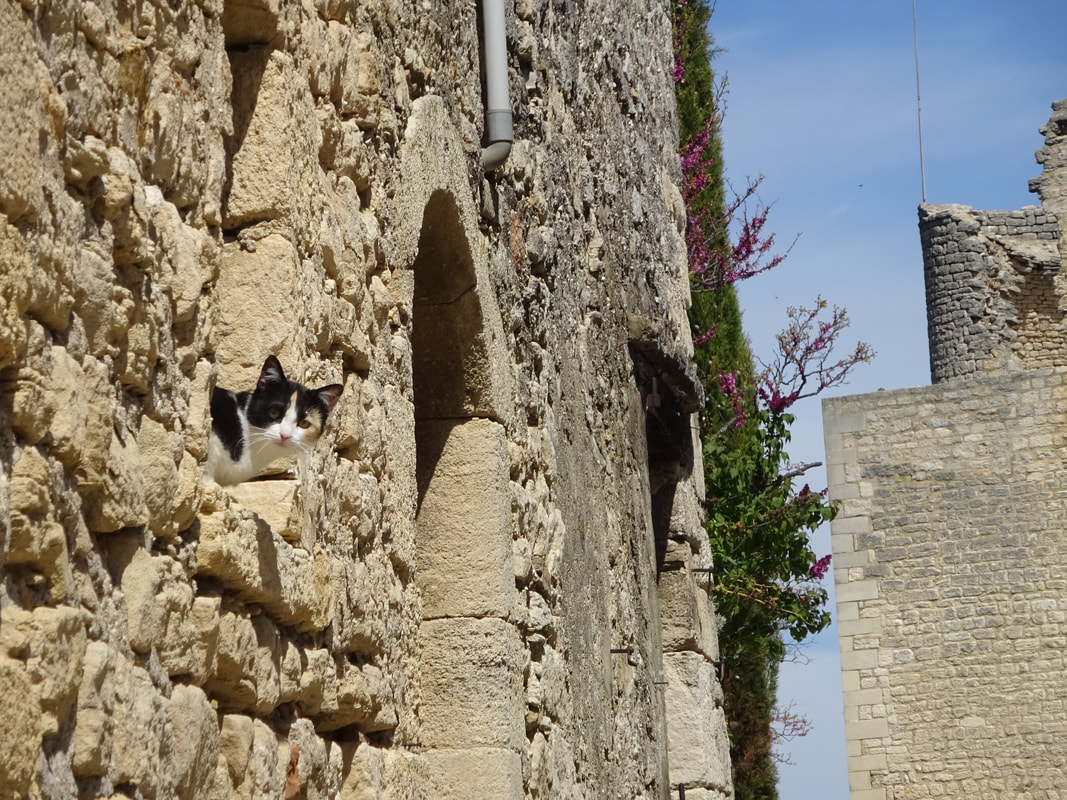












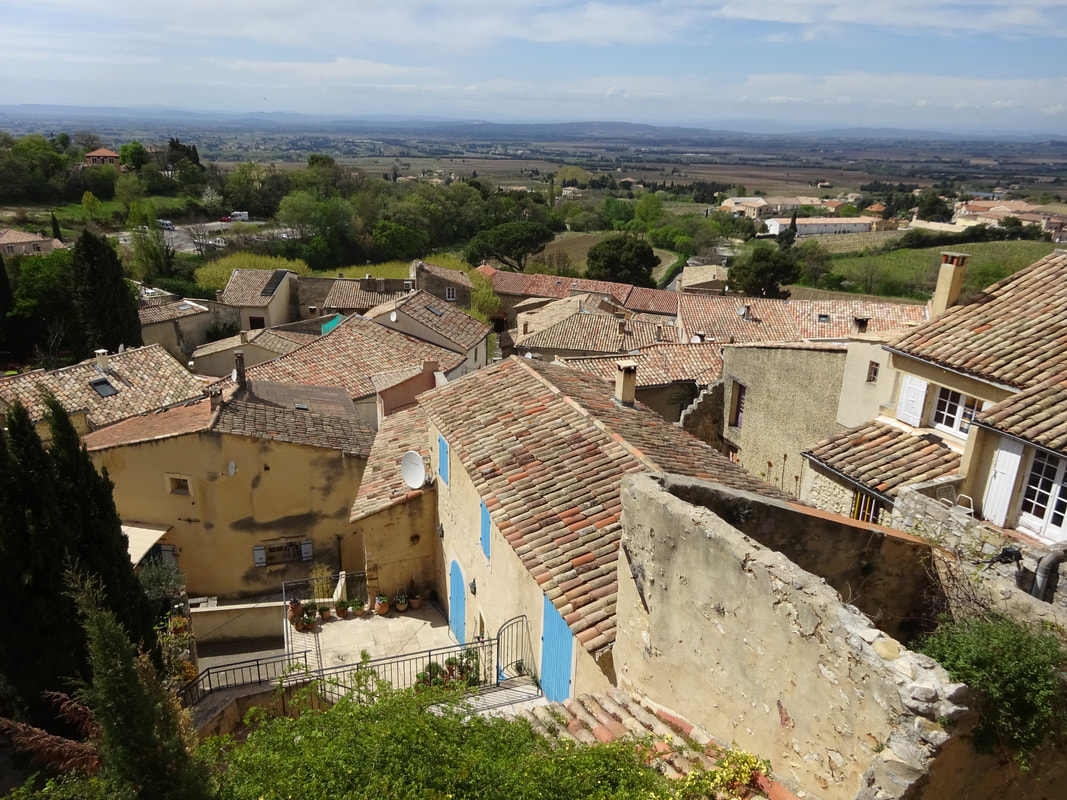

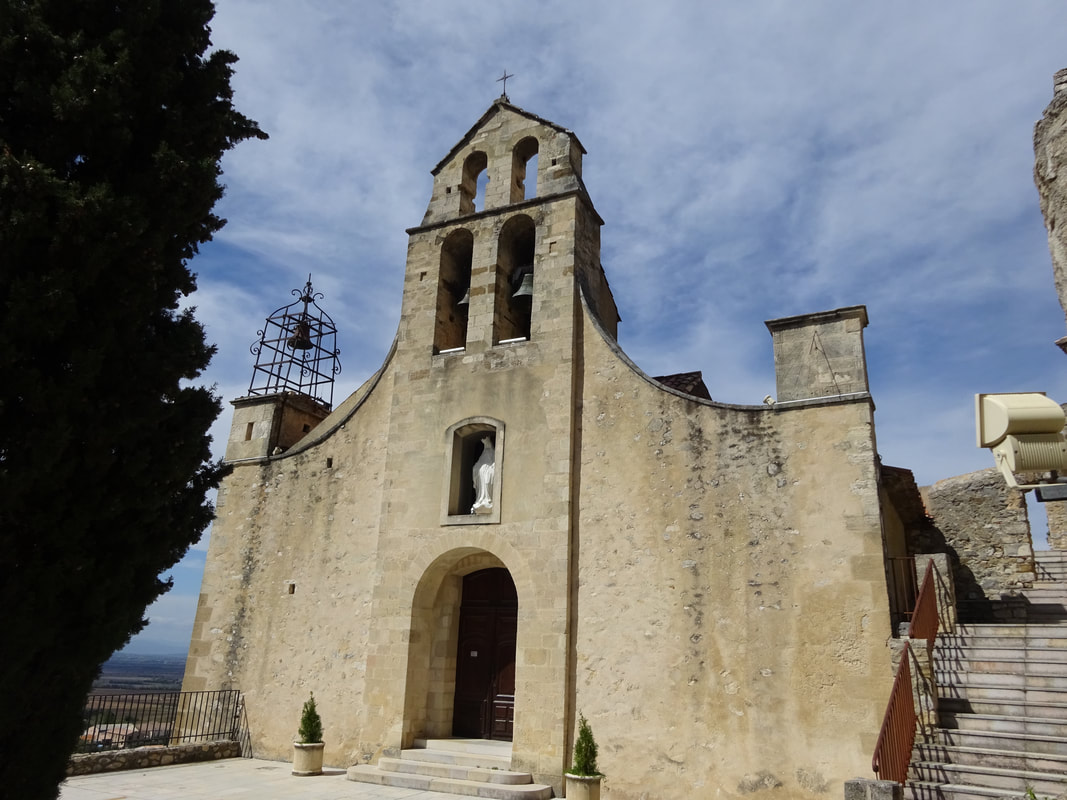



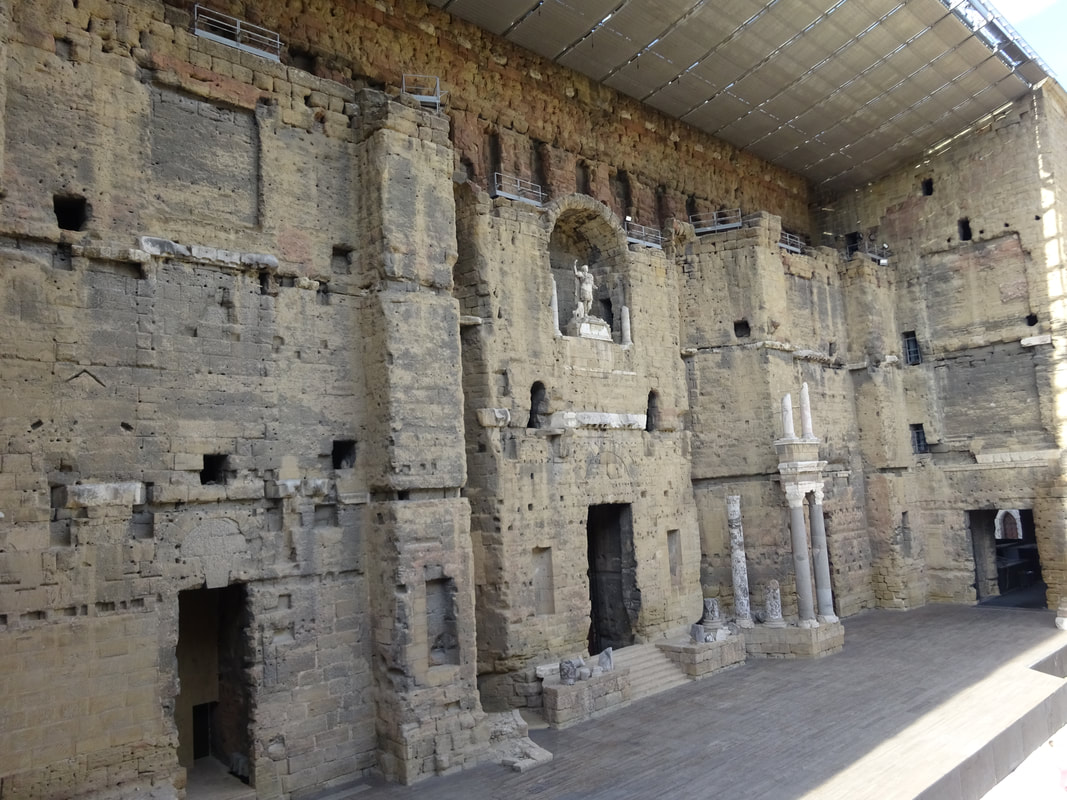







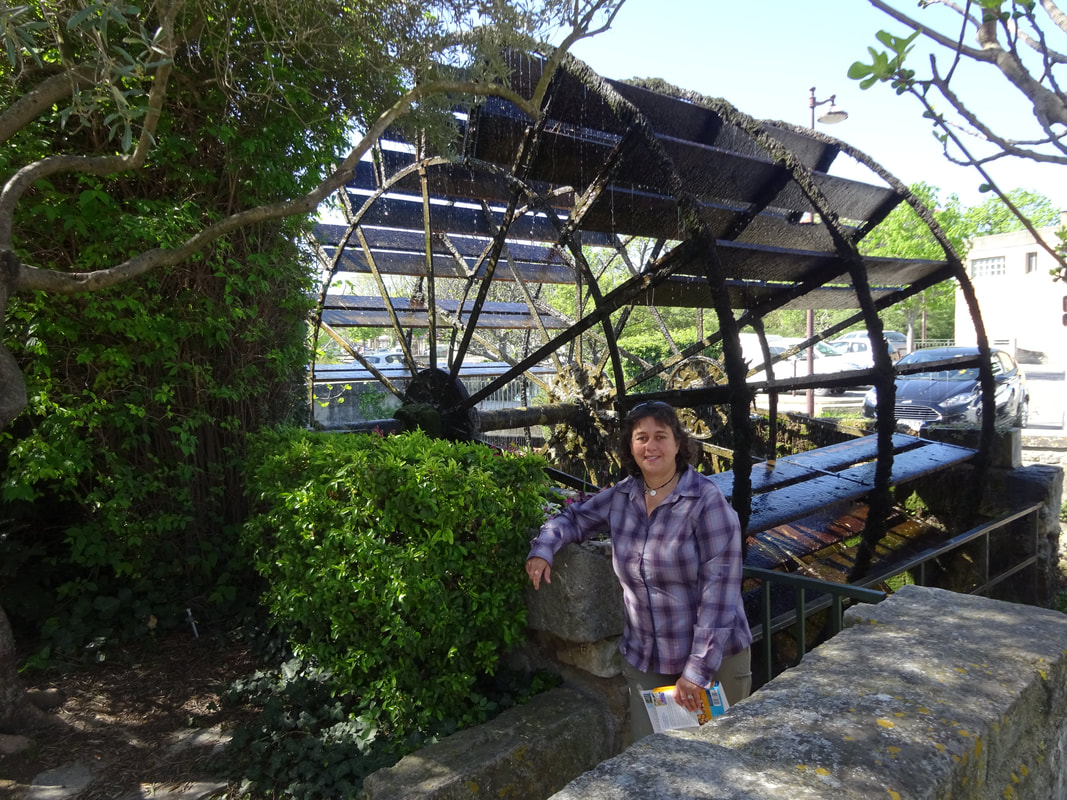

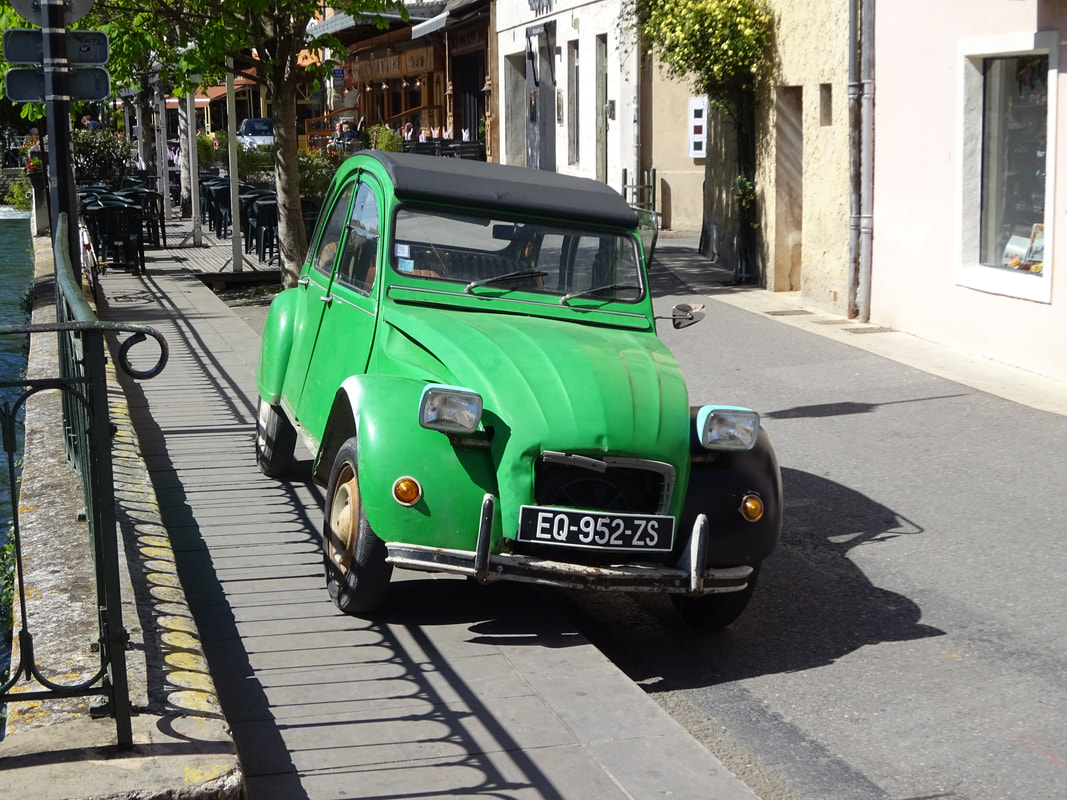


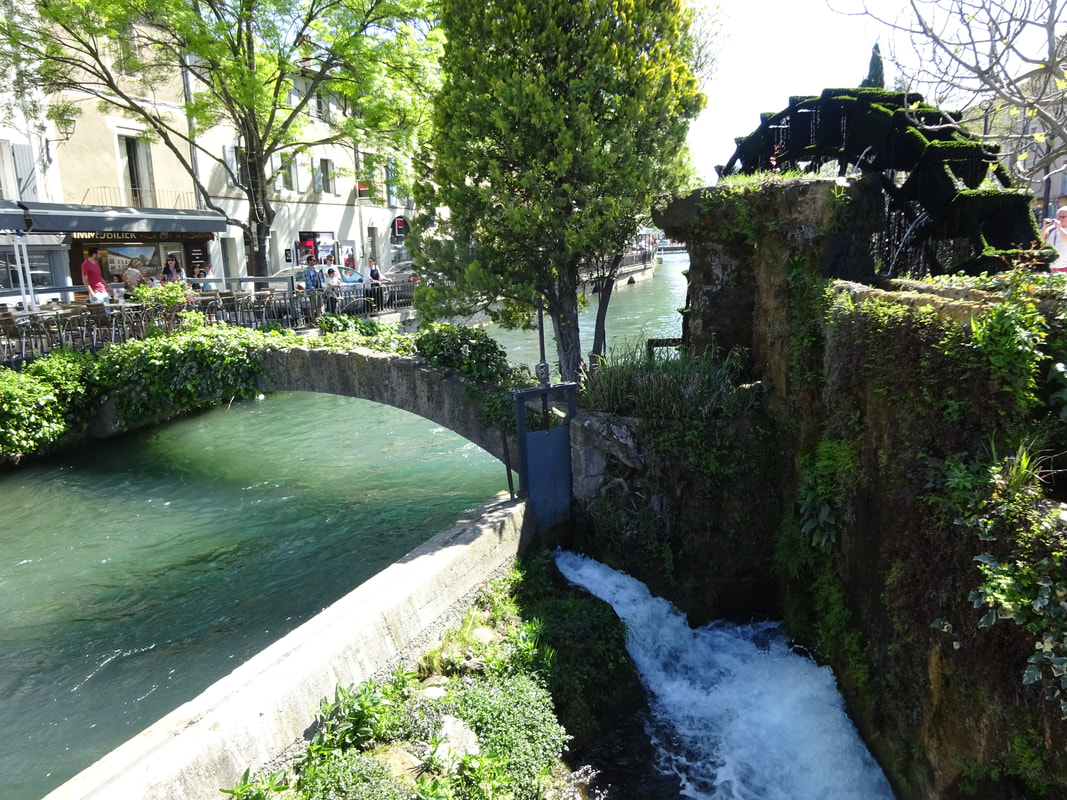








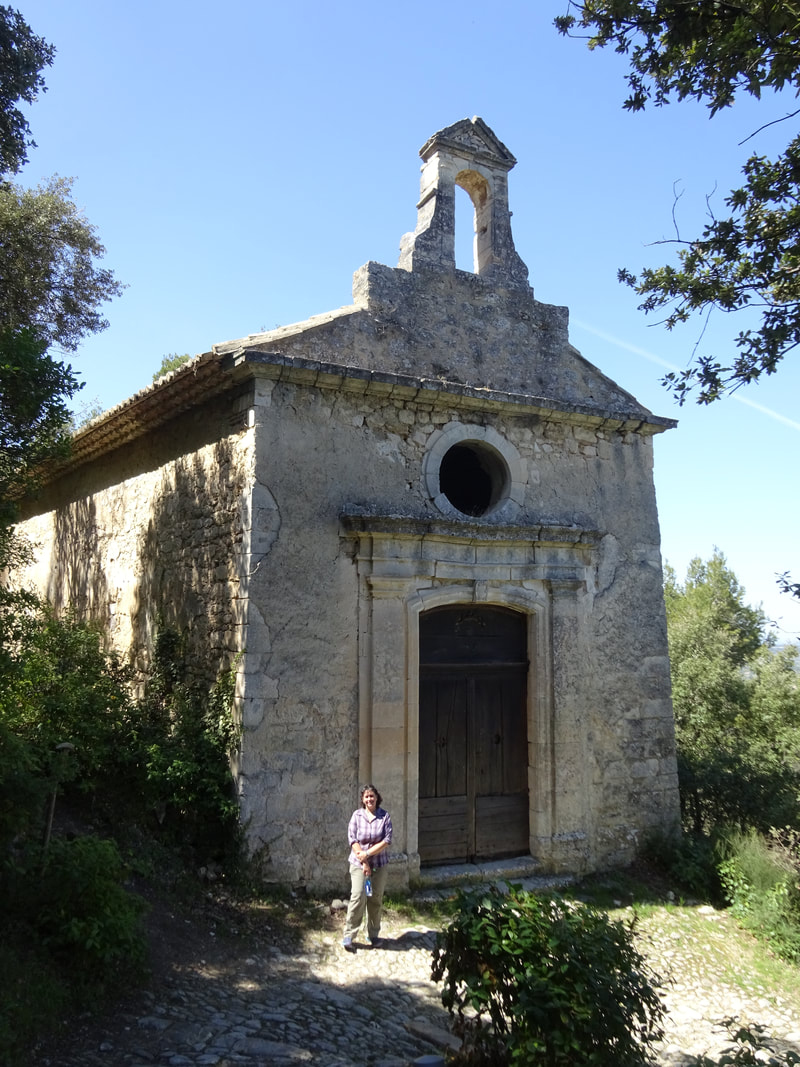






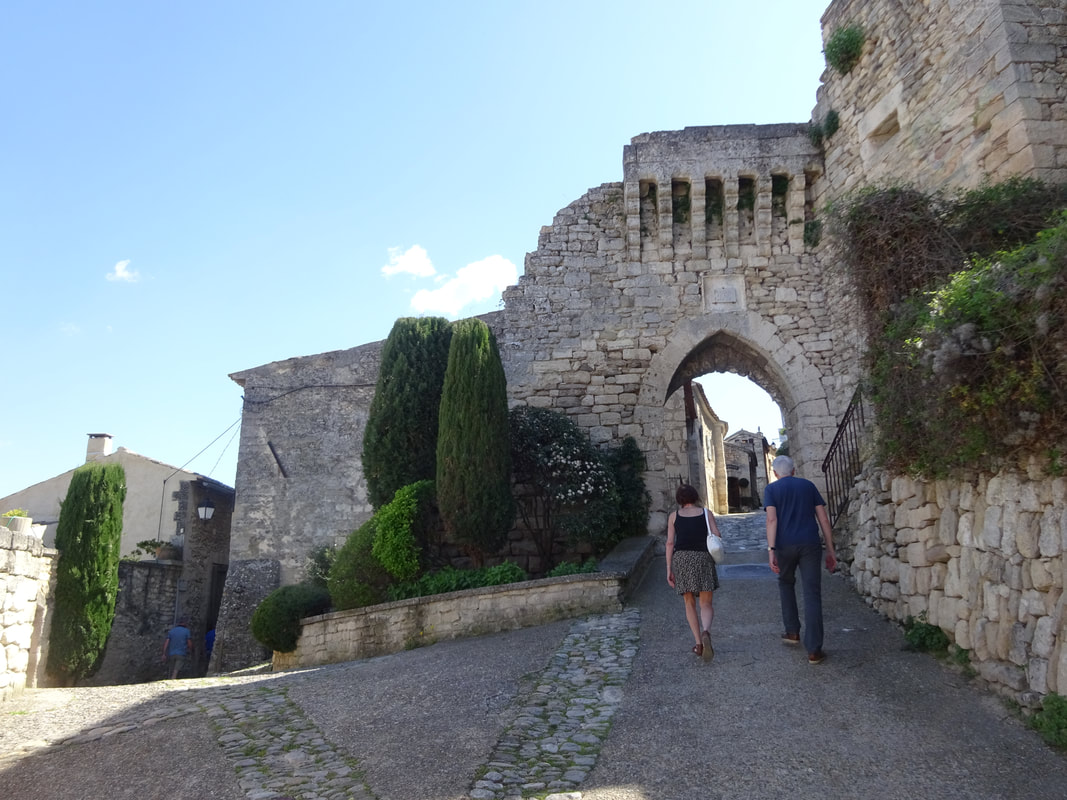




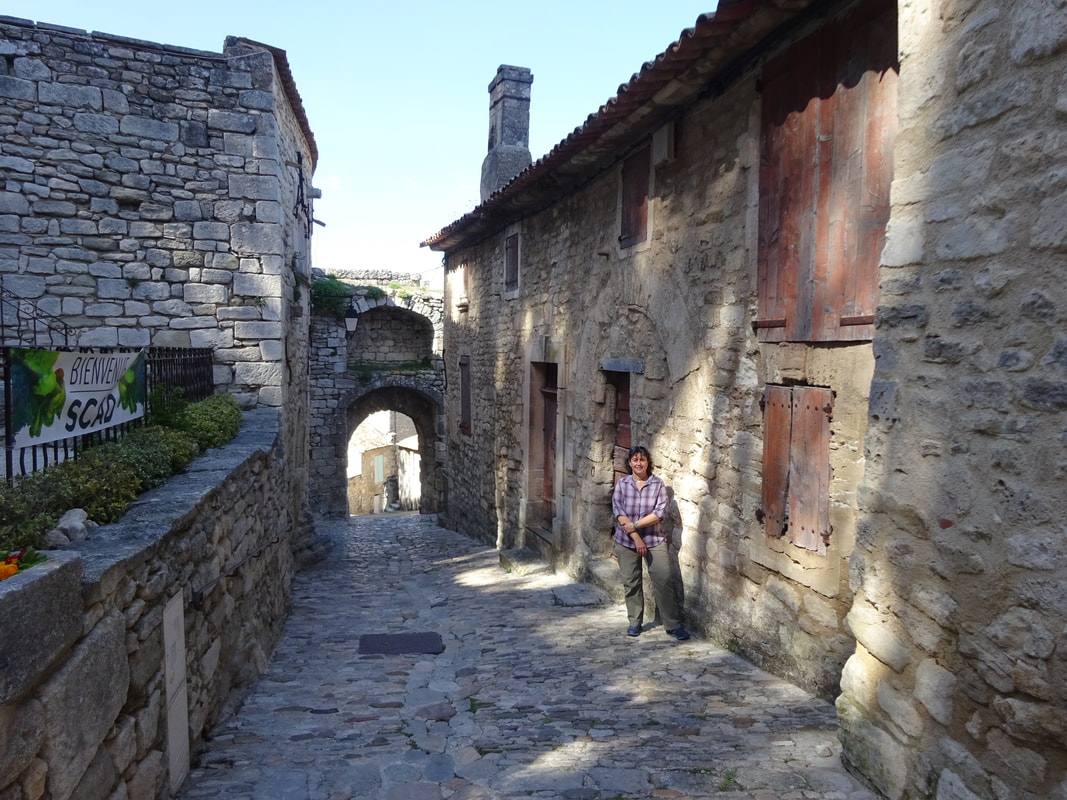


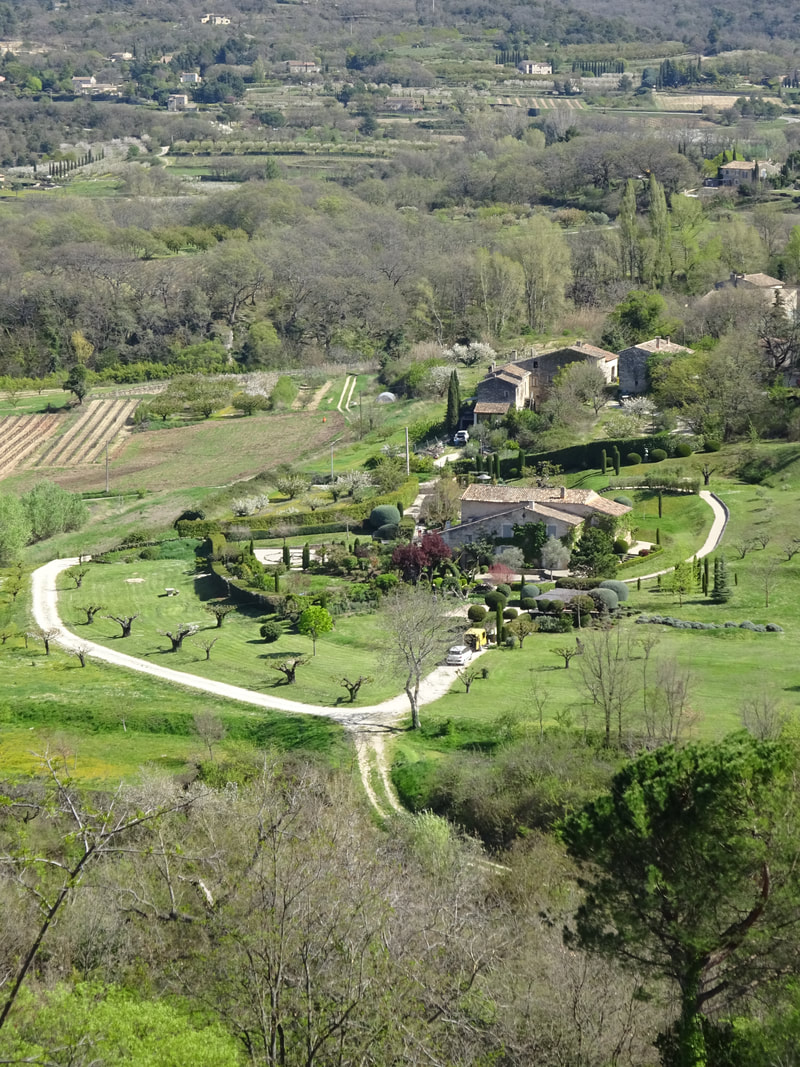








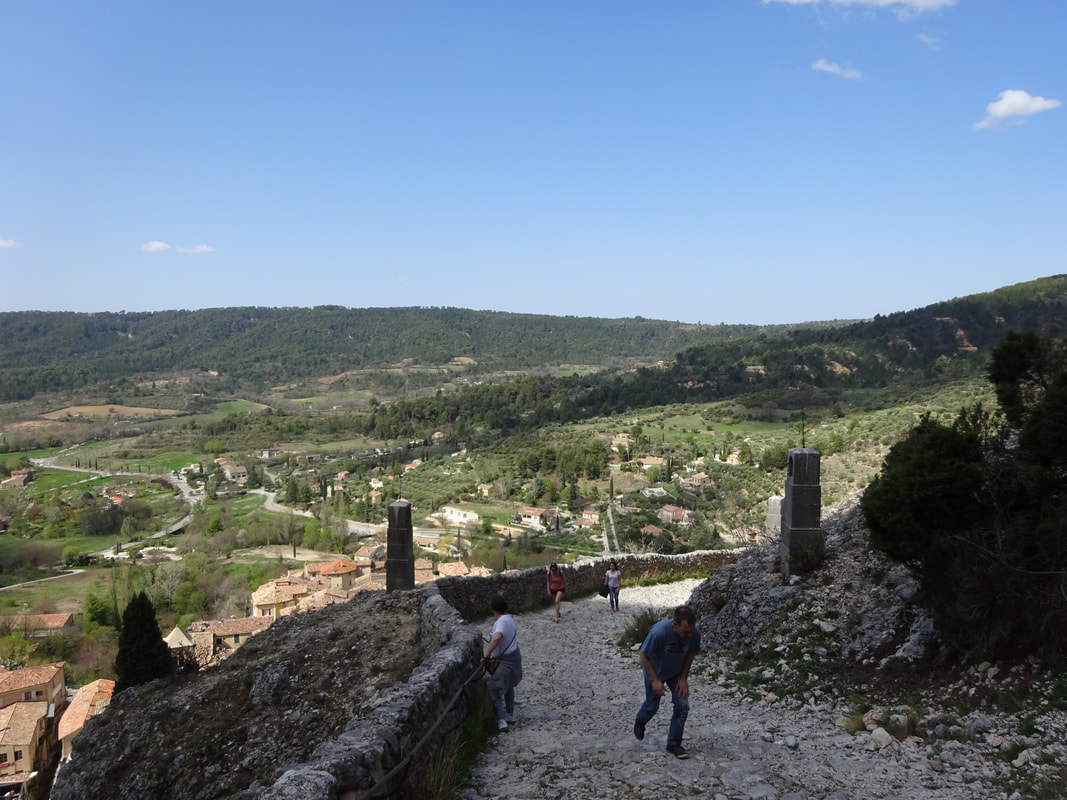











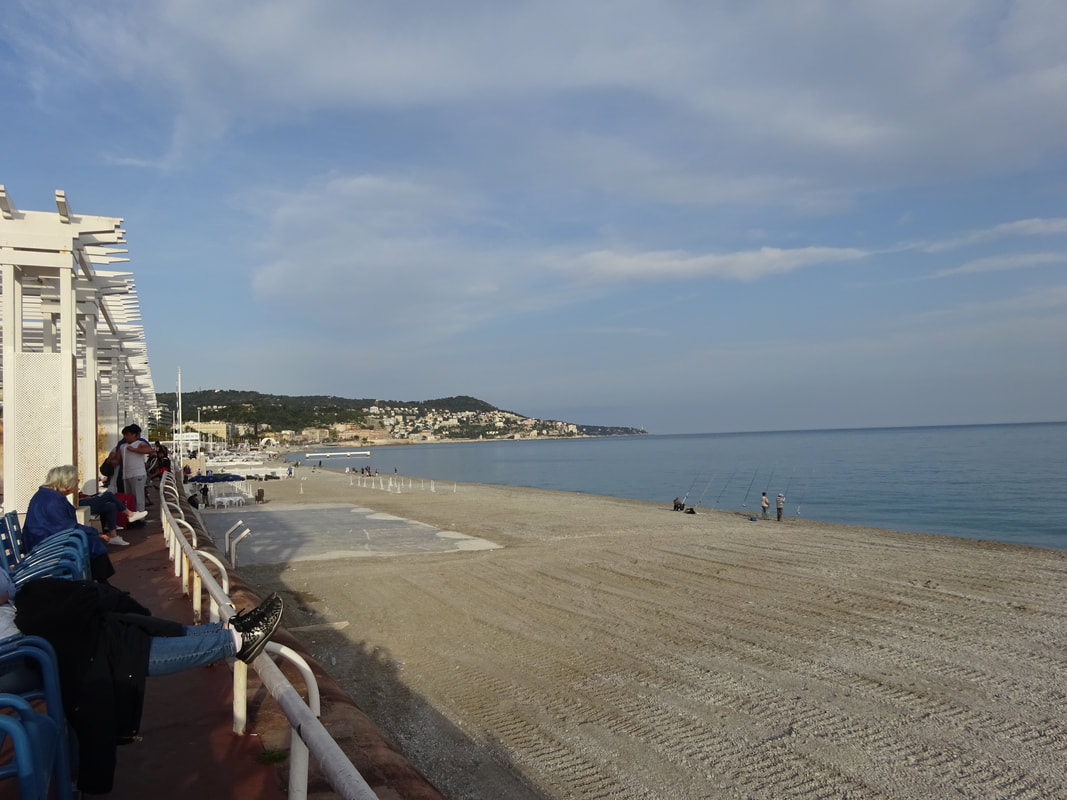




 RSS Feed
RSS Feed
